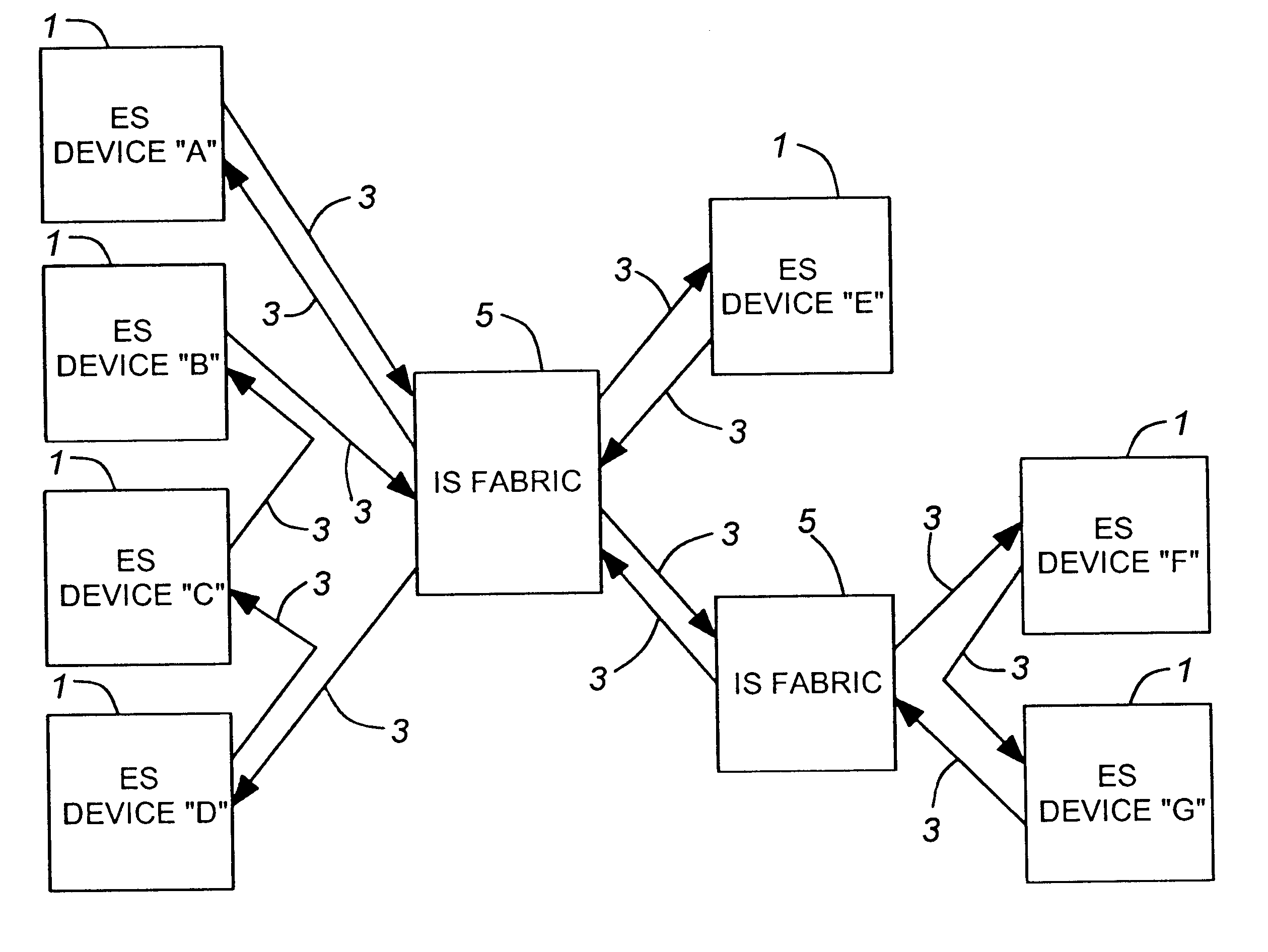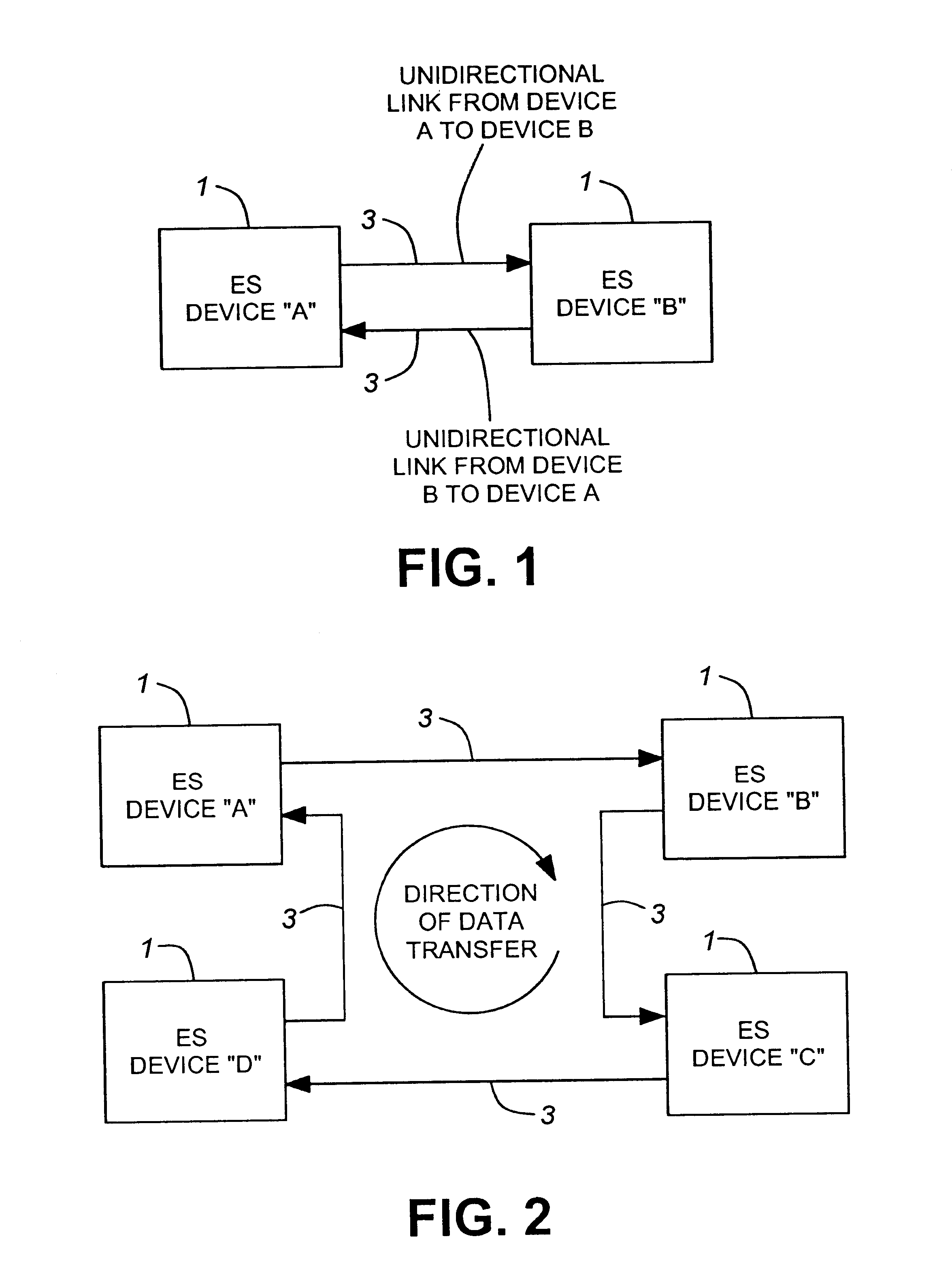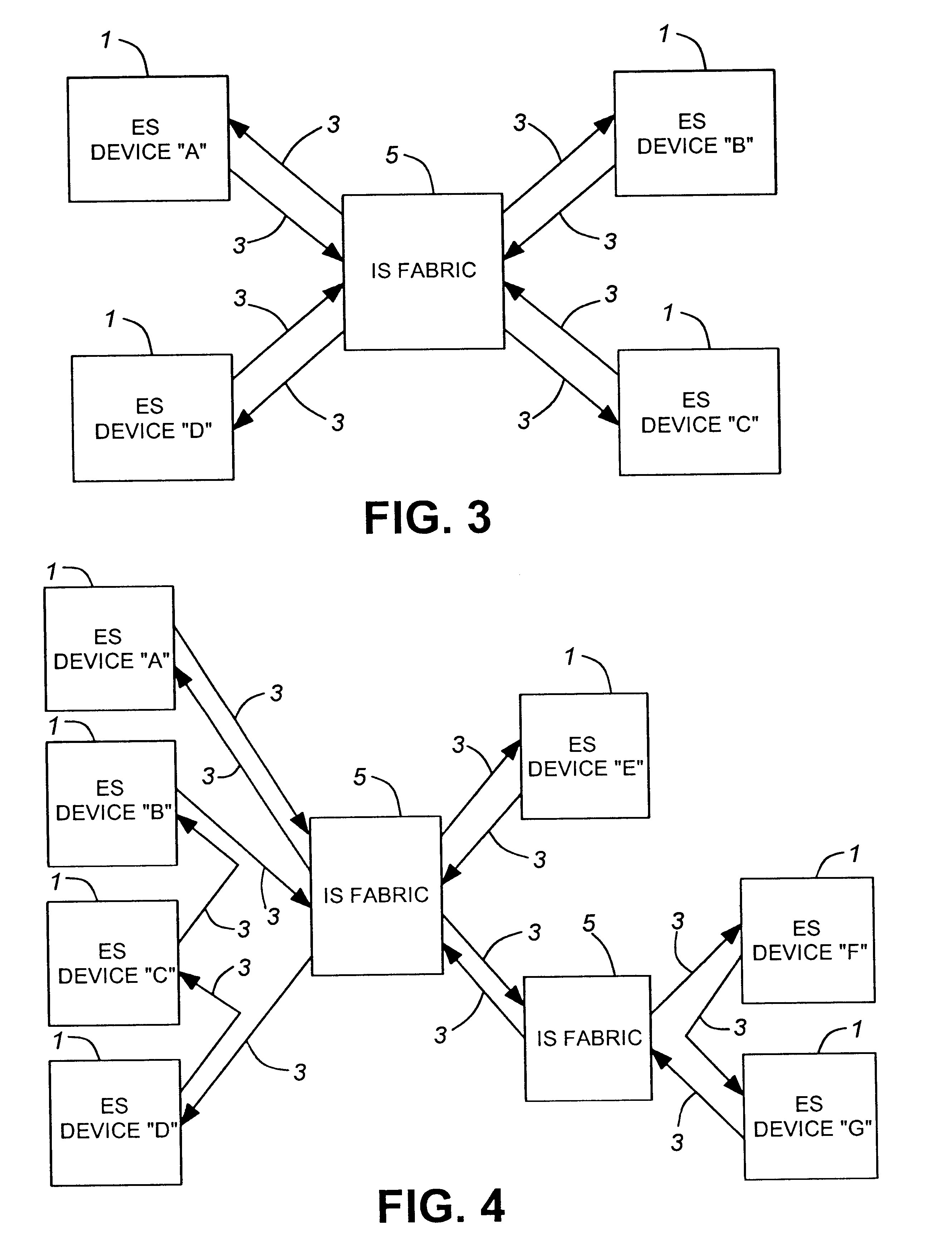Communication method for packet switching systems
a packet switching and communication method technology, applied in the field of communication methods for packet switching systems, can solve the problems of increasing the cost of the switch, and the inability to scale the number of nodes in the out of band scheduling
- Summary
- Abstract
- Description
- Claims
- Application Information
AI Technical Summary
Problems solved by technology
Method used
Image
Examples
Embodiment Construction
Turning to FIG. 1, a simplest form of a network comprising a pair of nodes 1 is shown, which are interconnected by a pair of unidirectional links 3 (transmission paths) which carry data in opposite directions from each respective node to the other. The nodes are labelled and are referred to as end systems (ES) (as distinct from switching devices which merely route data, and which are referred to as intermediate systems (IS)).
FIG. 2 illustrates four nodes 1 which are interconnected in a ring network, with the egress port of one node coupled to the ingress port of the next via unidirectional transmission links 3.
As may be seen, the unidirectional nature of message flow exists with only four point-to-point links being used to connect the four nodes (devices). The ES devices bypass or forward messages from their ingress to their egress ports if they determine, by inspecting the destination addresses carried within the messages, that it is necessary to do so. Thus a message originating a...
PUM
 Login to View More
Login to View More Abstract
Description
Claims
Application Information
 Login to View More
Login to View More - R&D
- Intellectual Property
- Life Sciences
- Materials
- Tech Scout
- Unparalleled Data Quality
- Higher Quality Content
- 60% Fewer Hallucinations
Browse by: Latest US Patents, China's latest patents, Technical Efficacy Thesaurus, Application Domain, Technology Topic, Popular Technical Reports.
© 2025 PatSnap. All rights reserved.Legal|Privacy policy|Modern Slavery Act Transparency Statement|Sitemap|About US| Contact US: help@patsnap.com



